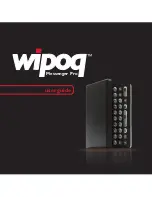
U.S. FDA
128
© BenQ M
obile 20
06,
Z:\
C81_
PHILI
PPE
_1\
ou
tpu
t\
FU
G\P
H
ILIP
PE_
FCC_am_
06050
3_te_
vz\STD_FCC_FDA.fm
left page (128)
of C81 PHILLIPPE FCC FUG am, (03.05.2006, 11:24)
Template:
X75,
143x
105 mm,
Version 2.
2;VA
R Language:
am;
VAR issue date:
060
119
to the user that is not necessary
for device function; and
• Cooperate in providing mobile
phone users with the best possible
information on what is known
about possible effects of mobile
phone use on human health.
• At the same time, FDA belongs to
an interagency working group of
the federal agencies that have re-
sponsibility for different aspects
of mobile phone safety to ensure
a coordinated effort at the federal
level. These agencies are:
• National Institute for Occupation-
al Safety and Health
• Environmental Protection Agency
• Federal Communications Com-
mission
• Occupational Health and Safety
Administration
• National Telecommunications and
Information Administration
The National Institutes of Health also
participates in this group.
In the absence of conclusive information
about any possible risk, what can con-
cerned individuals do?
If there is a risk from these products –
and at this point we do not know that
there is – it is probably very small. But
if people are concerned about avoid-
ing even potential risks, there are sim-
ple steps they can take to do so. For
example, time is a key factor in how
much exposure a person receives.
Those persons who spend long peri-
ods of time on their hand-held mobile
phones could consider holding
lengthy conversations on convention-
al phones and reserving the hand-
held models for shorter conversations
or for situations when other types of
phones are not available.
People who must conduct extended
conversations in their cars every day
could switch to a type of mobile
phone that places more distance be-
tween their bodies and the source of
the RF, since the exposure level drops
off dramatically with distance. For ex-
ample, they could switch to:
• a mobile phone in which the an-
tenna is located outside the vehi-
cle,
• a hand-held phone with a built-in
antenna connected to a different
antenna mounted on the outside
of the car or built into a separate
package, or
• a headset with a remote antenna
to a mobile phone carried at the
waist.
















































